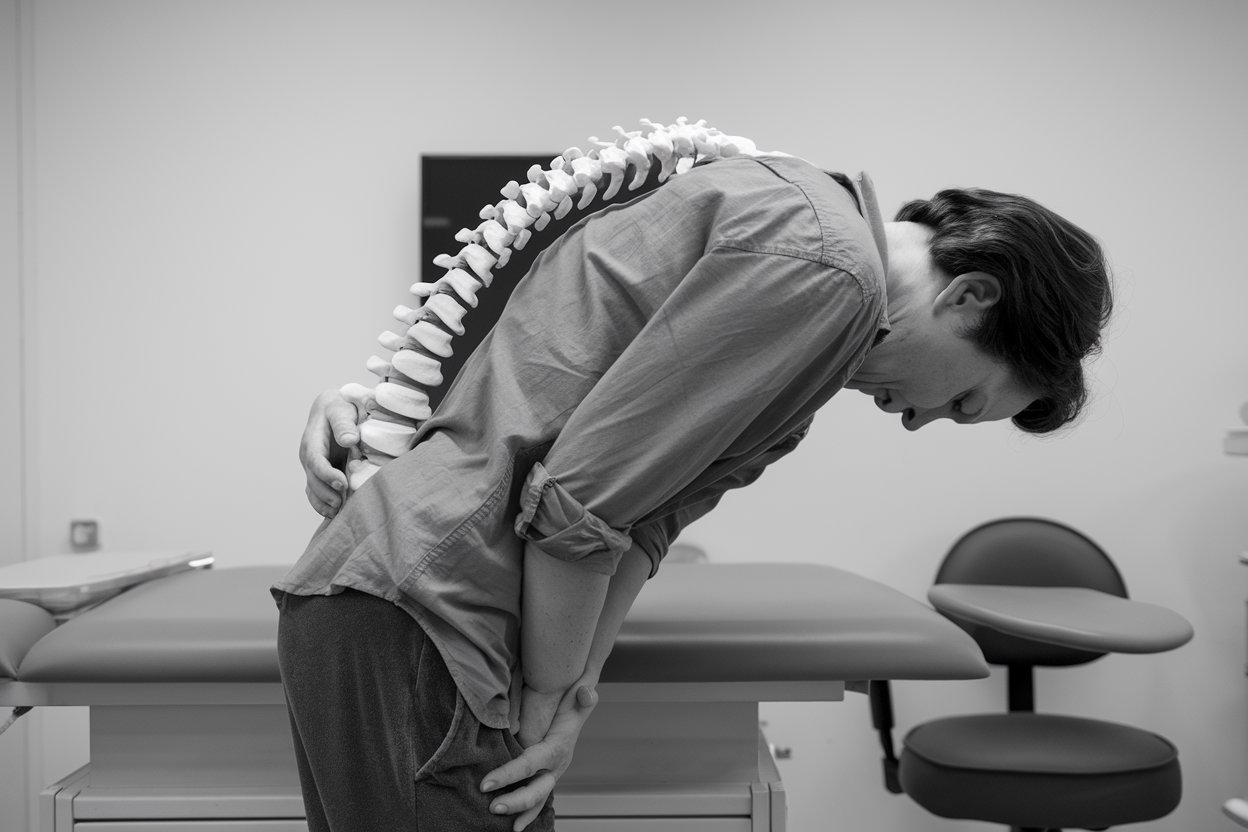
Marie-Strümpell Disease, also known as Ankylosing Spondylitis (AS), is a chronic inflammatory condition affecting the spine and large joints. Ever wondered what makes this disease unique? AS primarily targets the spine, causing pain and stiffness that can lead to severe, chronic discomfort. Unlike other forms of arthritis, it often starts in young adults, particularly men. Genetic factors play a significant role, with the HLA-B27 gene being a major contributor. Symptoms can vary widely, from mild back pain to severe spinal fusion. Early diagnosis and treatment are crucial for managing symptoms and improving quality of life. Curious to learn more? Here are 25 intriguing facts about Marie-Strümpell Disease.
Key Takeaways:
- Marie-Strümpell Disease, also known as Ankylosing Spondylitis, causes chronic back pain and stiffness. Early diagnosis and treatment can help manage symptoms and improve quality of life.
- Genetics, family history, and early adulthood are key factors in developing Marie-Strümpell Disease. Managing daily life with regular exercise, good posture, and stress management can support overall well-being.
What is Marie-Strümpell Disease?
Marie-Strümpell Disease, also known as Ankylosing Spondylitis (AS), is a type of arthritis that primarily affects the spine. It causes inflammation, which can lead to chronic pain and stiffness. Let's dive into some interesting facts about this condition.
Historical Background
Understanding the history of Marie-Strümpell Disease helps us appreciate how far medical science has come.
-
Marie-Strümpell Disease was first described by Vladimir Bekhterev in 1893. He was a Russian neurologist who noticed the spinal inflammation in patients.
-
Adolph Strümpell and Pierre Marie independently described the disease in 1897. Their work led to the condition being named after them.
-
The term "Ankylosing Spondylitis" comes from Greek words. "Ankylos" means crooked, "spondylos" means vertebra, and "itis" means inflammation.
Symptoms and Diagnosis
Recognizing the symptoms early can lead to better management of the disease.
-
Chronic back pain is a hallmark symptom. This pain often starts in the lower back and can spread to other parts of the spine.
-
Morning stiffness is common. Patients often feel more stiffness in the morning or after periods of inactivity.
-
Fatigue is another frequent symptom. The inflammation can cause a general feeling of tiredness.
-
Eye inflammation, known as uveitis, can occur. This can cause redness, pain, and blurred vision.
-
Diagnosis often involves imaging tests. X-rays and MRIs can show changes in the spine and joints.
Causes and Risk Factors
Knowing what causes Marie-Strümpell Disease can help in understanding who is at risk.
-
Genetics play a significant role. The HLA-B27 gene is strongly associated with the disease.
-
Men are more likely to develop AS than women. The ratio is about 2:1.
-
Symptoms usually start in early adulthood. Most people are diagnosed between the ages of 20 and 40.
-
Family history increases risk. Having a relative with AS raises the likelihood of developing the condition.
Treatment Options
While there's no cure, various treatments can help manage symptoms.
-
Nonsteroidal anti-inflammatory drugs (NSAIDs) are commonly used. These medications help reduce pain and inflammation.
-
Physical therapy is crucial. Exercises can help maintain flexibility and posture.
-
Biologic medications can be effective. These drugs target specific parts of the immune system to reduce inflammation.
-
Surgery is rarely needed. In severe cases, joint replacement or spinal surgery might be considered.
Living with Marie-Strümpell Disease
Managing daily life with AS involves various strategies.
-
Regular exercise is beneficial. Activities like swimming and walking can help keep the spine flexible.
-
Good posture is important. Maintaining proper alignment can reduce pain and prevent further spinal damage.
-
Heat and cold therapy can provide relief. Applying heat can relax muscles, while cold packs can reduce inflammation.
-
A healthy diet supports overall well-being. Anti-inflammatory foods like fruits, vegetables, and fish can be helpful.
-
Stress management techniques are useful. Practices like yoga and meditation can help manage pain and improve quality of life.
Research and Future Directions
Ongoing research aims to improve understanding and treatment of AS.
-
Genetic studies are ongoing. Researchers are exploring other genes that may be involved in AS.
-
New medications are being developed. Scientists are working on drugs that target different aspects of the immune system.
-
Stem cell research shows promise. Early studies suggest that stem cells might help repair damaged tissues.
-
Patient registries are valuable. Collecting data from people with AS helps researchers identify patterns and improve treatments.
The Final Word on Marie-Strümpell Disease
Marie-Strümpell Disease, also known as Ankylosing Spondylitis, is a chronic inflammatory condition affecting the spine and large joints. Understanding its symptoms, causes, and treatment options can help manage the disease effectively. Early diagnosis is crucial to prevent severe complications. Regular exercise, medication, and a healthy lifestyle play significant roles in managing symptoms and improving quality of life.
Staying informed and working closely with healthcare providers can make a big difference. Remember, knowledge is power when dealing with any chronic condition. If you or someone you know shows signs of Marie-Strümpell Disease, consult a medical professional for advice and support.
By staying proactive and educated, you can navigate the challenges of this disease more effectively. Keep learning, stay active, and take control of your health journey.
Frequently Asked Questions
Was this page helpful?
Our commitment to delivering trustworthy and engaging content is at the heart of what we do. Each fact on our site is contributed by real users like you, bringing a wealth of diverse insights and information. To ensure the highest standards of accuracy and reliability, our dedicated editors meticulously review each submission. This process guarantees that the facts we share are not only fascinating but also credible. Trust in our commitment to quality and authenticity as you explore and learn with us.
